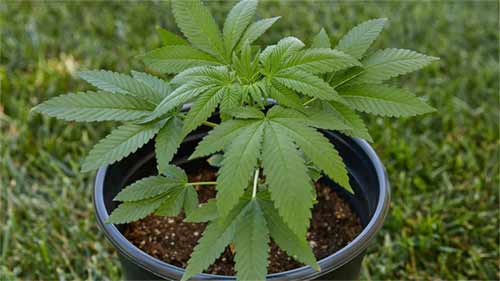
Cloning Cannabis Successfully [Steps & Pictures]
Cloning a Cannabis plant – What does it mean? What is cloning? In short, it is a process during which a part of a Cannabis plant is used to grow another Cannabis plant.
The entire process is called cloning because a copy of the original plant is created, and doing this is one of the easiest ways to grow Cannabis plants.
The idea of cloning Cannabis intrigues a lot of cannabis growers, but they have no idea how to go about it. Cloning cannabis plants requires taking a cutting from a healthy mother plant and rooting it in soil or water. As soon as the cutting takes root and begins to grow, it can be transplanted into a pot and treated as any other cannabis plant.
By severing a piece of the plant, a grower forces the severed piece to make roots while the original plant continues growing. When a cutting has roots and shoots, it becomes a viable plant.

Table of Contents
The Benefits of Cloning Cannabis
100% Female Plants
Since cuttings are genetically identical to the mother plant, it will retain the female gender you need. Some growers utilize this since there is no risk of hermaphrodites in your crop.
Higher Number Of Plants
The number of Cannabis plants you own will increase drastically once you start cloning your plants. By the end of the season, you will get more buds if you have more plants. You won’t have to worry about buying a large number of seeds. However, you will need the resources to keep a mother plant alive year-round.
Cloning cannabis is less time-consuming.
Cloning helps significantly shorten the time it takes for commercial growers to reach harvesting. Utilizing cannabis cloning offers several advantages compared to seed growing, although it takes a certain level of precision that can be difficult to provide in a home grow setting. That’s not to say that you can’t do it successfully at home, but you must be able to grow with a certain level of precision.
Predictability / Reliability
It’s safe to assume your plants will have the same qualities as the parent plants since clones are genetically identical. Two factors change how these plants grow over time. The first is that the mother plant degrades over time, making her cuttings produce less viable plants that are harder to nourish and care for. The second factor is variations in the environment between grows.
Resilience
Even though clones are more susceptible to environmental stressors than plants grown from seed, once they have a more developed root system, they can actually be more resilient and adaptable than seedlings. They are less likely to succumb to pests and diseases.
Lower Costs
Feminized seeds can be expensive to purchase, so if you plan to grow year round and have the resources to sustain a healthy mother plant, growing cannabis clones enables you to avoid that cost.
Consistent Quality
Large scale growing operations utilize cloning since the plants will produce a consistent bud quality that these types of growers can depend upon.
Concerns With Cannabis Cloning
Less Root Support Than Plants Grown From Seed
Plants grown from seeds may develop a more robust root system than clones, producing more than the clones as a result.
More Precise Conditions Required For Successful Growing
One of the biggest reasons that large-scale growing operations use cloning is their ability to repeatedly provide the same conditions to many plants. Cloned plants are more susceptible to environmental stressors than plants grown from seeds. Home growers are more likely to have variations in growing conditions during different grows, so be aware of this potential obstacle.
Lower Bud Production
Since plants grown from seeds develop more robust root systems than clones, they have been shown to produce more. As a mother plant ages, it produces less viable leaves for cutting, which produce less bud and are harder to nurture.
In general, cloning does not necessarily guarantee identical plants. Even with identical genetic makeup, each clone may exhibit slightly different characteristics due to variations in growing conditions. In some cases, clones may inherit genetic issues from their mother plant.
How To Prepare To Clone Cannabis Plants
Equipment List
- One female Cannabis plant (that has not yet begun to flower)
- One razor blade.
- One mister bottle.
- One bottle of cloning gel (such as CloneX)
- One bottle of cloning powder.
- One cloning tray (with a plastic greenhouse dome)
- Two small plastic buckets.
- Rockwool Cubes or compressed peat pellets
Caring For Cloned Plants
- Keep your new plants moist by misting them frequently.
- For the first week after transplanting, water intensely.
- When using rockwool, make sure the cube has been thoroughly moistened but isn’t too wet. It shouldn’t drip water when you grab it by a corner.
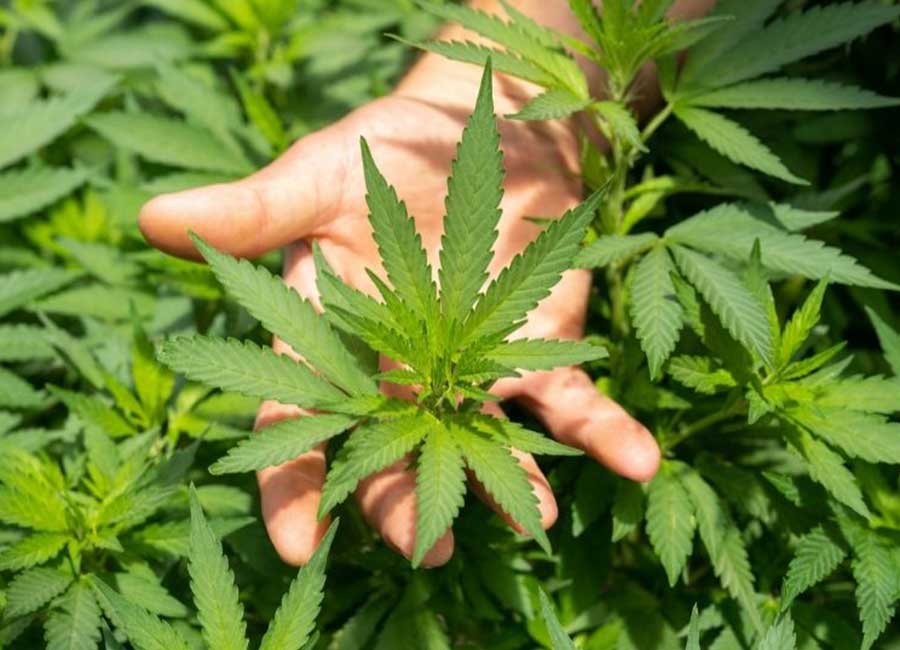
What Is A Cannabis Mother Plant?
The mother plant is any cannabis plant from which you take a cutting or clone. If you have a sickly mother plant, its clones will also be sickly. Since mother plants pass on their genetics to their clones, choose a healthy one with desired growth patterns and characteristics to have the best results. You want to choose a sturdy and healthy plant. Mother plants stay in vegetation throughout their entire lifespan.
Choosing The Mother Plant To Clone From
Cannabis mother plants are the source of cloning materials for Cannabis cultivation. Ideally, you want a healthy plant with good genetic materials that can be replicated generation after generation.
When taking cuttings, choose a plant with a high amount. Your initial cuttings should come from hardy stock since your clones will have the same genetic makeup as the mother plant. Choose plants you know will produce lots of buds and grow to your desired size and height.
A clone worth reproducing should be selected carefully since its clones will be genetically identical. Choose a plant that is still in the vegetative stage for your cuttings. A plant’s vegetative stage begins when it’s 3-4 weeks old and lasts for up to 16 weeks before it blooms.
How Long Can My Mother Plant Last For?
The mother plant can live for years if kept in the right environment. It’s possible, however, that over time her clones will lose strength. Promote one of your mother plant’s clones to take her place when she’s ready to retire.
Despite identical genetic makeup, each clone may display slightly different characteristics due to differences in growing conditions.
A cloned plant’s roots should reach two to four inches in two to five weeks. In this stage of development, cannabis plants are ready for transplanting to permanent pots.
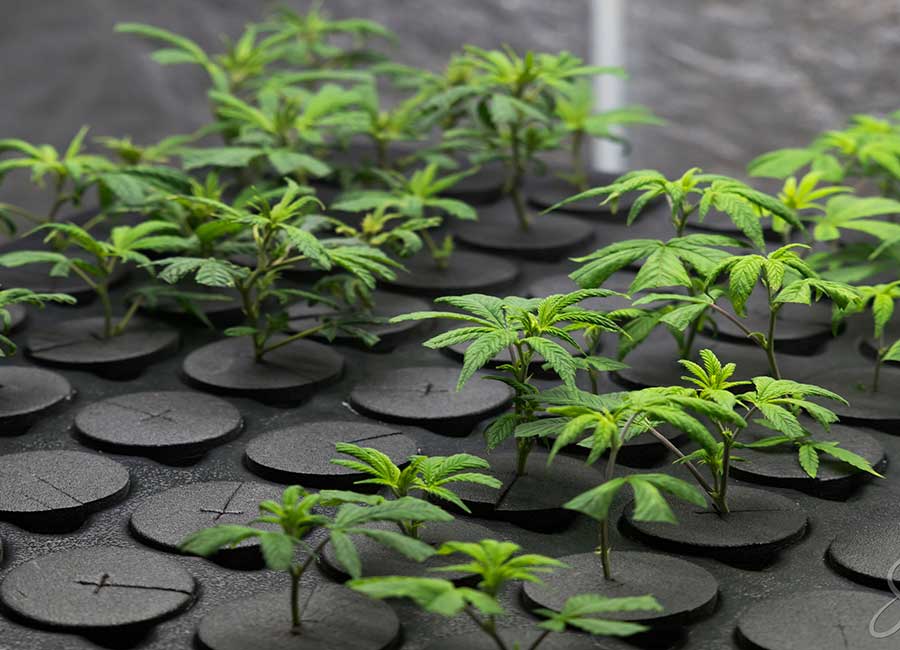
Cloning Cannabis Plants – Step by Step
The steps involved in cloning are relatively straightforward, despite it sounding complex. Taking good care of your clones will ensure they grow into healthy, disease-free plants.
Even though it sounds scientific, cloning is relatively easy. You will learn how to cut clones from mother plants and use your cannabis cuttings effectively in this section. These are simple steps, but giving extra attention to detail is important, as growing clones is a less forgiving process than growing from seed. Invest in high-quality supplies, and take your time.
Before harvesting, clones taken from a flowering plant must go back into a vegetative state. To find the healthiest growth most likely to survive cloning, go to the top of the plant. Make sure the selected segment for clipping has at least two nodes, then cut under the bottom node at a 45-degree angle.
Here are some steps to clone your Cannabis plant using rockwool.
Step 1: Preparation / Identify your Cannabis Mother Plant
In order to create a genetically identical plant, you must first identify the ideal mother plant. The tray and dome should always be new or disinfected before use. Make sure that the tray and dome are in a room with an ambient temperature of 75°F and about 50% humidity.
The next step is ensuring your tray isn’t on a cold surface. Using a heat mat can sometimes cause your starter cubes to dry out too quickly, although some growers still like to use them. If you don’t have a towel, you can use a thick piece of cardboard as long as it is off the cold surface.
For cuttings, hang a 2′ long 24 watt T5 light to give your cuttings life; this will be sufficient light over your dome. Also, presoak a minimum of 20 and a maximum of 30 rockwool cubes in water at 5.5pH. It takes about 20-30 minutes for starter cubes to soak.
Step 2: Put Cubes In Tray
After your 20-30 cubes have been presoaked, we will place them in the tray, evenly spaced. The Rockwool cubes should be shaken a few times after removing them from the presoak solution, but without squeezing them, as this will change their consistency.
The cube should be able to be held with one corner lower than the rest without water dripping. It is important to do this for every cube, even for those in which you intend to make something other than clones.
Make sure that no additional water has drained from the cubes after being placed in the tray. Soak up any standing water in the tray with a paper towel.
Step 3: Prepare The Clone For Rooting
Each pot should contain one clone. Take the Rockwool rooting cube out of the tray and squeeze it out.
After digging the hole, place the cube in it, and backfill any empty space or gaps with the soil. Ensure that the entire bottom of the cube is in contact with the soil medium.
Get rid of air bubbles by thoroughly watering the plant. Now your clones can grow and thrive!
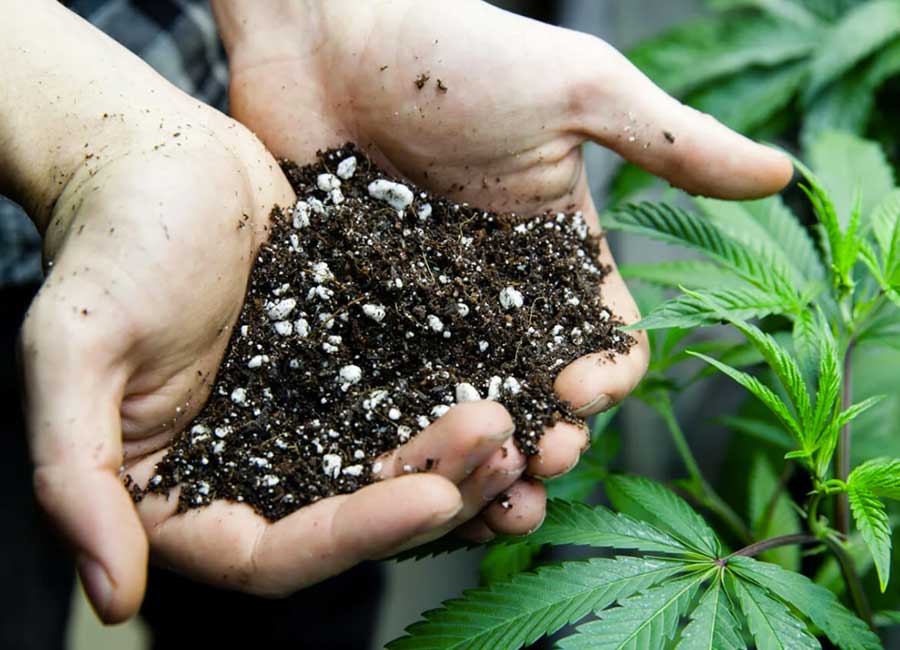
Choose the Right Rooting Medium
You should plant your clones in a well-aerated, moist medium to help them develop healthy roots. Rockwool cubes provide excellent moisture retention and allow for plenty of airflow, so we recommend using them for the best results. You should also buy a plastic tray (which will hold the cubes and keep them moist) and a dome or propagator to maintain humidity.
Once the plants are in their rooting medium, lightly mist them with a spray bottle. After that, cover your plants with a plastic dome to prevent them from drying out.
When white hairs begin to sprout from the rooting cubes, remove the cuttings from the cubes. After that, it’s time to transplant.
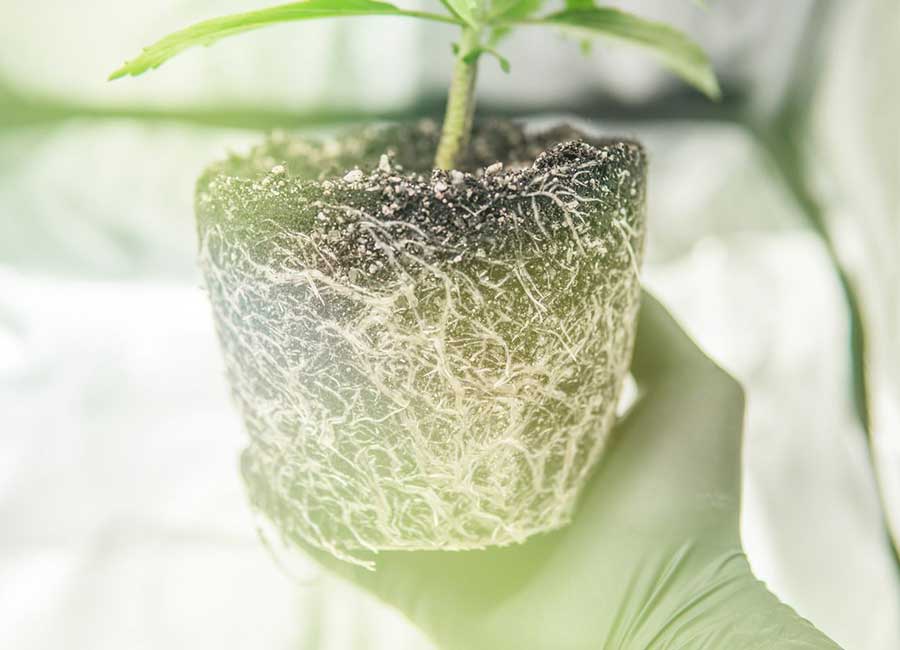
Should I Grow From Seed Or Clone?
There is no one size fits all answer to this question, however growing from seeds can be more suited to home growers producing Cannabis from seeds. Home growers likely need more resources and experience to benefit from applying cloning techniques to their operations, but that’s not to say you can’t do it successfully. You will have the most success doing this once you have grown cannabis a few times.
Why Doesn’t Everyone Grow Clones?
The types of growers that benefit from cloning are commercial growers who can sustain a mother plant for years at a time, who also need to cultivate their plants quickly with a high level of reliability. Since home growers are not set up with the same high grade equipment and professionally built grow rooms as a large scale growing operation, they are less equipped to provide the same conditions repetitively.
Home growers and beginners benefit from their plants being more forgiving than clones due to the robust root system of a seedling.
Cannabis Cloning – Frequently Asked Questions (FAQ)
Where To Make The Cut For Cannabis Clones?
Under the last node of your cutting, make a clean 45° cut. By increasing the rooting surface, the cutting will grow faster and develop more roots.
Does Trimming The Tips Of Leaves Help Cloning Success?
Like seedlings, clones take up water through their leaves as they develop their roots. To allow plants to transpire properly, you must maintain the right temperature and relative humidity. Trimming your cutting’s leaves will also help it retain water in the beginning while it develops its roots.
Does Splicing The Stem Help Cloning Success?
Make a clean cut at a 45° angle below the last node of your cutting. This will increase the area of the rooting surface, helping the panch develop more roots and grow more quickly.
Where Should A Clone Be Cut From The Mother Plant?
Use a sharp scissor or razor blade to cut your clone straight below a node. A clone should be between 5-8” long. In order to avoid clones fighting for light, all clones should be cut at the same length so none have to fight for light.
Is Cloning Formula Necessary For Cloning?
Rooting hormone (such as cloneX gel) or aloe powder can help the plant grow healthy roots by coating the base of the stem where the cut was made. The rooting medium should be soaked in a water-nutrient solution before you place the stem into it. Although Cloning is possible without Cloning Formula, your clones will develop a better root system and be better producers by using it.
How to Clone Without Rooting Hormone
Agrify’s chief science officer, David Kessler, explains the process.
According to David Kessler, the chief science officer at Agrify, cuttings with three leaves or more had better root quality and using cloning gel more than doubled the root success and showed consistent improvement in root quality compared to not using cloning hormone. If you want to clone without rooting hormone, just place your cutting in its rooting medium, water it, give it nutrients, and hope for the best.
How Long Should Clones Take To Grow Roots?
The roots of clones usually begin to appear after seven to ten days. It takes longer for some plant varieties and it takes less time for others. Once clones are rooted and acclimated to the ambient humidity and temperature, they can be treated as vegetative plants.
How Much Roots Should A Clone Have Before Transplanting?
In order to reduce the chances of transplant shock, it’s best to wait until the roots are at least 3 inches (7.6 cm) long before transplanting your clones.
What To Do If Clones Are Not Rooting
The rooting medium must be humid, having used water with a pH of 6.0, which will immensely help them to root properly. Make sure you don’t wet the medium too much as the trunk might rot and then it won’t root at all. Another common mistake that people make is scraping the cutting too much when taking it.
How Often Should I Mist Or Water Clones?
If using soil, there is no one-size-fits-all answer. Your watering schedule depends on the type of soil you use, the size of your pots, your climate, and the stage of growth your clones are in.
As a general rule of thumb, you should water your clones every 2-3 days.
If you are working with a light – well-draining soil mix, then more frequent watering may be required. If you’re using a heavier, clay-based soil mix, you may be able to get away with watering less often.
The amount of labor required to care for clones is reduced when auto-cloners are used. Using aeroponics, these machines spray nutrient water onto your cuttings at set intervals to promote root growth.
What Is The Best Temperature / Humidity For Cloning?
Temperatures in a cloning environment should be between 70-78°F with 75-90% RH.
Do I Need A Heatmat For Cloning?
Using a heat mat can sometimes cause your starter cubes to dry out too quickly, although some growers still like to use them. If you don’t have a towel, you can use a thick piece of cardboard as long as it is off the cold surface.
Is Cloning Gel Better Than Cloning Powder?
Cloning Gel is more effective than powder, although some growers still opt to use powder since it is more shelf stable. It is also easier to work with than Cloning Powder.
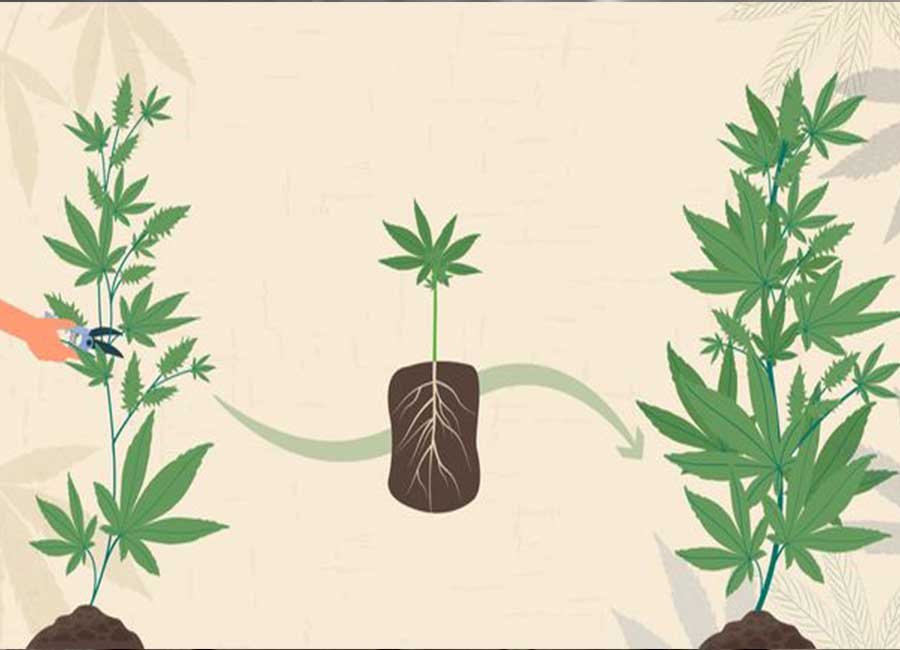
Cloning Cannabis – Final Thoughts
Overall, cloning Cannabis plants is a great and cost-effective way to get the best Cannabis you like. It is possible to take a cutting from any plant, but plants in the flowering stage take weeks or even months to clone. Cannabis cloning is essentially just growing Cannabis. It takes time and experience to master both forms of art. The best way to learn is by practicing.
While growing clones isn’t ideal for beginners, it is a relatively simple process. Growers who have successfully grown cannabis from a seed before are more likely to have be successful growing clones. With any grow, it’s important to understand what your plants need to thrive and the various environmental factors Cannabis plants respond to. If you need seeds to grow a great mother plant, check out our feminized and autoflower selections. Happy Growing!
Learn more about how to clone Cannabis & start a Mother Plant tent here!
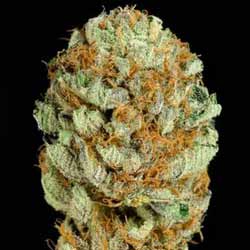
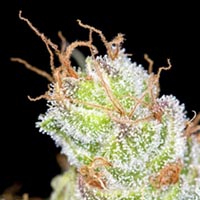
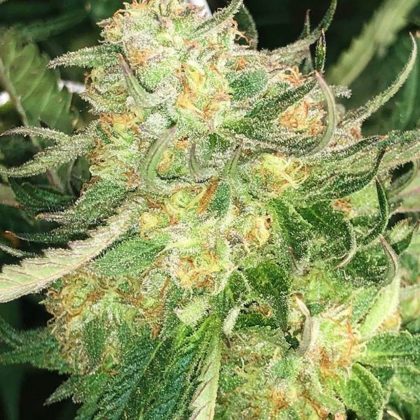
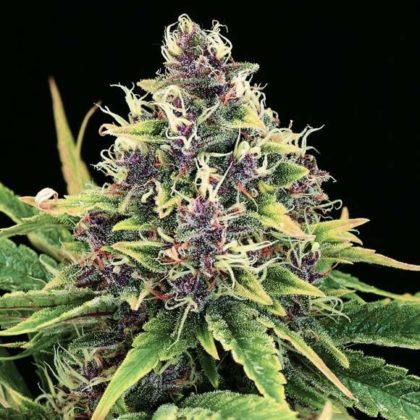





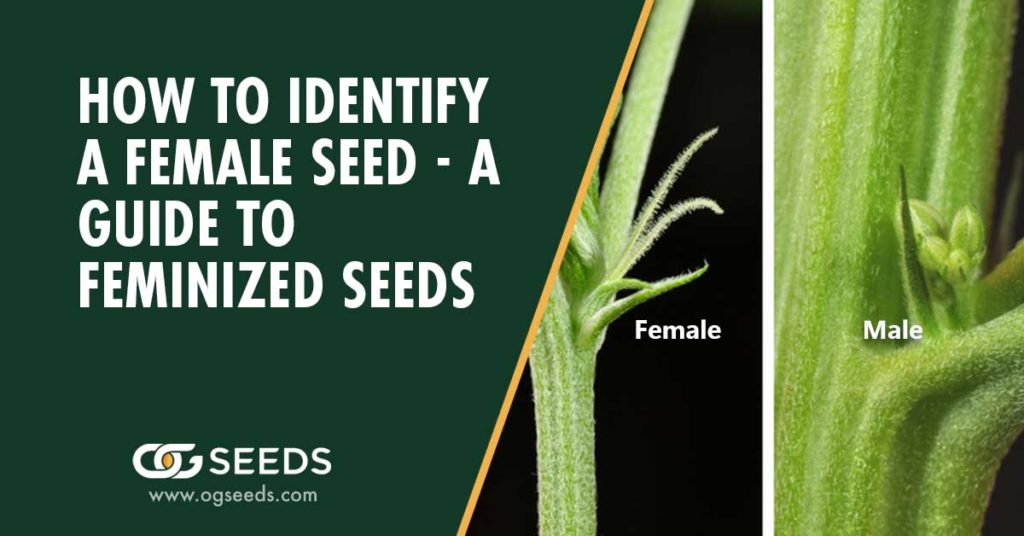
![How Long Does It Take To Grow Cannabis? [Indoors Vs Outdoors]](https://ogseeds.com/wp-content/uploads/2023/01/How_Long_Does_It_Take_To_Grow_Weed_Indoors_Vs_Outdoors_1200x628-1024x536.jpg)
